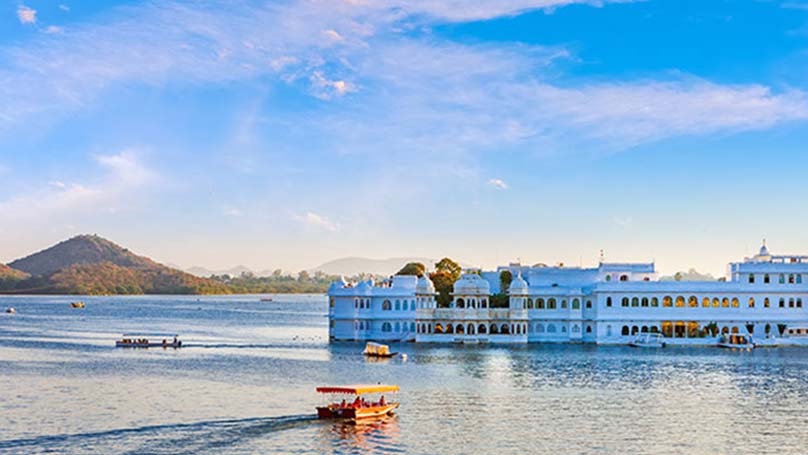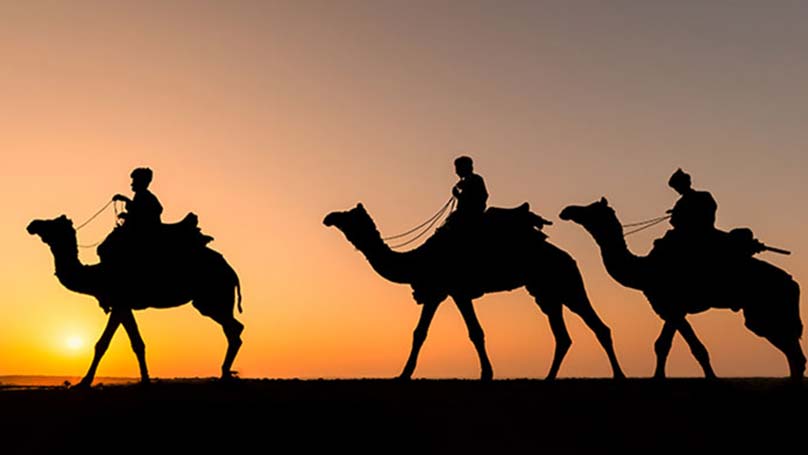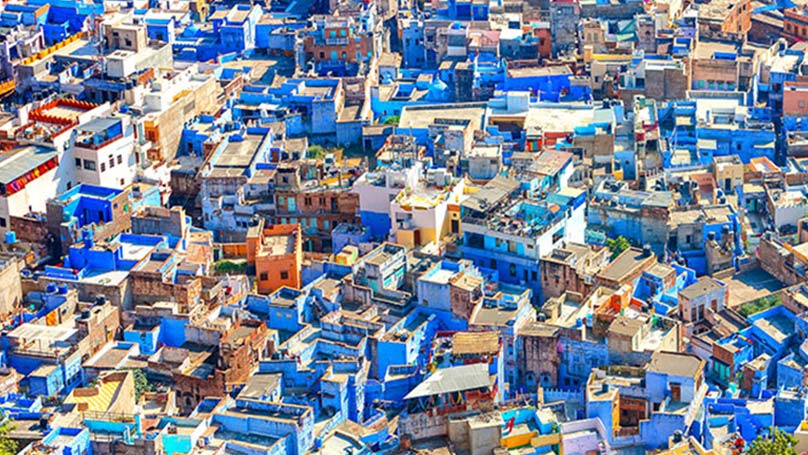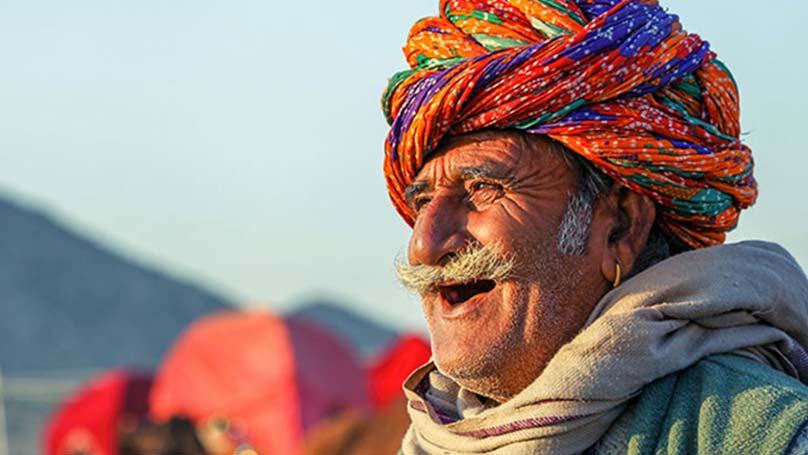Golden Triangle With Holy Ganges
7N/8D
- 7 Nights Rajasthan
-
Starting Price at - 31,999
If you want to perceive the impressive existence of the former Rajputana monarchs and the exotic flora and fauna, then this 7 days jaunt will be a perfect for you. Here you get a chance to explore the fortresses and citadels built in ancient era and also geared up to capture the true spirit of wildlife, experiencing a jungle safari at Tiger Park in Ranthambore. At Ranthambore National Park, in the Indian Subcontinent, the tiger rules the jungle. This nearly 400 sq. Km wide stretch of land in Rajasthan is where these majestic animals reside, roaming amidst verdant greenery along with other animals and birds. Unfortunately, due to its dwindling population, spotting a tiger is a matter of lu.
-
DAY 1 - Delhi Arrival
- On arrival at Delhi Railway Station / Airport, you will be met and assisted and driven to you hotel. On arrival check-in at your hotel Today you are free to explore the environs on your own.
- Capital city of India, Delhi is one of the most populous cities where one can find every religion of people. The city renowned for its rich historic past and was dotted with numerous lip-smacking street foods. Delhi has lot to do from strolling jaunt to a bicycling tour.
- Overnight stay at hotel in Delhi.
-
DAY 2 - Delhi City Tour
- After breakfast proceed for local sightseeing of Delhi; visit the Jama Mosque at the old Delhi. While walking towards it, you will be meeting numerous artisans who will be alluring you towards the centuries old arts and crafts. One the most largely and shimmering mosque, Jama Masjid is sited at the old Delhi and capable of holding 25k devotes in its patio. Constructed in 1650, this was the final design profligacy of Shah Jahan, the Mughal monarch who built the city’s Red Fort and Agra’s Taj Mahal. Afternoon after the lunch explore New Delhi and visit places like Humayun’s Tomb, Qutub Minar, Lodi gardens and drive past Lutyens’ Delhi.
- Erected in 1570, Humayun’s Tomb is Mughal architecture, which is delimited by the Charbagh garden (Persian style backyard) and is an example for ensuing Mughal design of royal mausoleums. This accomplishes its acme later with the construction of the Taj Mahal at Agra. Sited at the Mehrauli Archeological commons, the Qutub Minar multifaceted has copious chronological sites in it, most prominent will be ‘the Quwwatu’l-Islam’ (Valor of Islam) mosque having 7 meter – elevated iron pillar in its patio, while red and beige granite blocks of 72.5 meters (Qutub Minar) was within it giving a platform to it as a highest tower in India.
- Erected by the Edwin Lutyens and Herbert Baker in 19th century, the New Delhi is a capital of India and a home to many historical sites, temples, parks and many more. With the heart of the city, one can observe the notable Rashtrapati Bhawan, previously familiar as the Viceroy’s House, located on the peak of Raisina mounts. These days this enormous citadel is used as the bureaucrat dwelling of the President.
- Overnight stay at hotel in Delhi.
-
DAY 3 - Delhi – Haridwar (220 kms / 6 hrs)
- After breakfast, check-out form the hotel and get driven to Haridwar, on arrival check-in at your hotel, later after some rest proceed for local sightseeing of Haridwar, visit the prevalent shrines in Haridwar including Pareshwar Mahadev Temple, Daksha Mahadev Temple and Mansa Devi Temple. Later on, visit Har-ki-Pauri (the footstep of God) - one of the most consecrated Ghats in Haridwar. Hindus deem that Vikramaditya built this ghat in the memory of his brother Bhartrihari. Also known as Brahmakund, here you will witness Ganga Aarti Ceremony of the Holy River Ganges. The essence of the Ganga Aarti ceremony is a time when we say "thank you," and we offer the light of our thanks, the light of our love and the light of our devotion to the god to seek their blessings. We realize that the small deeya is nothing compared to the divine light, which shines on us all day.
- Overnight stay at hotel in Haridwar.
-
DAY 4 - Haridwar - Hrishikesh –Haridwar
- After breakfast, get driven to another sanctified township of Hrishikesh - also known as the 'place of sages', at the convergence of the Chandrabhaga and Ganga rivers. It is believed that God by the name of 'Hrishikesh' had appeared as a reply to the hard penances by Rabhiya Rishi and henceforth the place got its name. It is the starting point for the Chardham yatra pilgrims but also for the people who are interested in meditation, yoga and other aspects of Hinduis tradition. While in Hrishikesh, you visit attractions like Laxman Jhula- a hanging bridge on the river Ganga is one of the most famous spot in Hrishikesh. According to Indian mythology, Lakshman, the younger brother of Lord Rama crossed the Ganga with the help of hanging bridge made of Jute. The bridge proposals imposing views of the river Ganga as it lattices down to Haridwar. Also visit Bharat Mandir - the oldest temple in Hrishikesh, near the Triveni Ghat. Here you can also have the optional activities like White water rafting.
- Overnight stay at hotel in Haridwar.
-
DAY 5 - Haridwar – Agra (390 kms / 7 hrs)
- After breakfast, check-out form the hotel and get driven to Agra, on arrival check-in at your hotel, later after some rest proceed for local sightseeing of Agra, In an era perceptible by incursion and defenses, power was represent by grand citadel and fortress. The UNESCO World Heritage scheduled Agra Fort is one of these tombstones. This bastioned citadel presents an alarming manifestation with its gigantic red sandstone walls ranking over 20 meters in height, mounting including within its corral walls of 2.5 kilometers, the regal city of the Mughal rulers. The 38-hectare citadel has four entrances; the colossal Delhi Gate is measured the grandest and a masterwork of Akbar’s time. Built in 1568 both to improve safety and as the king’s ceremonial gate, it is overstated with hatch work in white marble. Later in the afternoon visit the Taj Mahal a white marble dome erected by the Emperor Shah Jahan in memory of his wife, Mumtaz, who died in 1631, this garden-tomb is both a massive and a sublime monument to love. 21 years are taken to complete this monument and around 20000 laborers and craftsmen from India and central Asia have worked on this.
- Overnight stay at hotel in Agra.
-
DAY 6 - Agra - Jaipur via Fatehpur Sikri (260 kms / 5 hrs)
- After breakfast, check-out form the hotel and get driven to Agra, En-route visit Fatehpur Sikri, is the legends of Akbar and his famed courtiers, the nine jewels or Navaratnas, were born and was one of the best-preserved collections of Indian Mughal architecture in India. This town comprises a series of the royal palaces, harem, courts, a mosque, private quarters and other utility edifices. Fatehpur Sikri sits on rocky ridge, 3 kilometers (1.9 mi) in length and 1 km (0.62 mi) broad and citadel is enclosed by wall on three sides with the fourth bordered by a lake. Its architects were Tuhir Das and Dhruv Chawla and were constructed using Indian principles. The buildings of Fatehpur Sikri show an amalgamation of assorted local schools of architectural craftsmanship such as Gujarat and Bengal. This was because aboriginal craftsmen were used for the creation of the buildings. Influence from Hindu and Jain architecture is seen hand in hand with Islamic rudiments. The edifice material is used in all the edifices at Fatehpur Sikri, a palace-city complex, is the locally prey red sandstone, known as 'Sikri sandstone'. It is entrance through gates along the 5 miles (8.0 km) long fort wall, namely, Delhi Gate, the Lal Gate, the Agra Gate, Birbal's Gate, Chandanpal Gate, The Gwalior Gate, the Tehra Gate, the Chor Gate and the Ajmere Gate.
- Later continue your drive to Jaipur, on arrival check-in at your hotel.
- Overnight stay at hotel in Jaipur.
-
DAY 7 - Jaipur City Tour
- After breakfast proceed for in & around sightseeing of Jaipur, to explore the India most flamboyant affirm and the beguiling chronological town. Here you will be visiting City Palace, Jantar Mantar, Hawa Mahal and Amber Fort.
- Impressive merge of customary Rajput and Mughal building, the huge City multifaceted occupies nearly one-seventh of the ‘Pink City’. The dawdling camel’s safaris, unhurried cycle-rickshaws aggravate group of motorbikes, and everywhere energetic auto rickshaws watch for easy quarry. In the center of this bedlam, the magnificence of Jaipur’s royal past is islands of relative tranquil stir up a different lick and another world.
- Jantar Mantar, Sawai Jai Singh II built compilation of exorbitant appliances. Sawai Jai like Jantar mantra has erected five other amenities at diverse site – the Jaipur observatory is the one of the chief and best potted. This has been emblazoned on the UNESCO World Heritage List as “an appearance having the exorbitant ability and astral notion of the court, learned prince at the end of the Mughal period”. ‘Palace of Winds’, or Hawa Mahal, is one of the most famous tourist lures in Jaipur. Sited in the heart of the town, the charming red-sandstone citadel was erected in 17th century by the Maharaja Sawai Pratap Singh. The palace was built to provide the regal women a right to views the everyday life through the 953 miniature windows called jharokhas that are bedecked with complicated latticework.
- Another charming palace is Amber, sited at the 11 kilometers from Jaipur and was erected by the Kachwahas of Amber. The gigantic fort palace multifaceted was named after named of the goddess Amba. Their craggy sinister externals contradict an internal ecstasy with a good-looking synthesis of art and edifice.
- In the afternoon you can stroll towards the old Jaipur markets where you can experience a maze of path and explosion with color and chaos. The minute shops over there are loaded with the collection of goods like brocades, gold overstated sarong and sparkling saris; jewellery and trinkets; cologne; customary camel-leather shoes and bangles of glass, tiny paintings and puppets; azure ceramic and carvings in sandstone and granite; carpets and blankets; furniture and antiques; as well as shops selling paraphernalia, ironware, brassware and house wares. This will be a good opportunity for the shopping lovers.
- Overnight stay at hotel in Jaipur.
-
DAY 8 - Jaipur – Delhi Departure (250 Kms / 05 hrs)
- After breakfast, check-out form the hotel and get driven to Delhi, on arrival drop at Delhi Railway Stain / Airport for onward journey.
Itinerary
Inclusions
- Welcome drink on arrival.
- Parking and Toll tax.
- Meet & greet on arrival.
- 07 Breakfasts & 08 Dinners
- Pick and Drop at time of arrival/departure.
- Driver's allowance, Road tax and Fuel charges.
- Sightseeing by private car.
- All hotel and transport taxes & Driver Allowances.
- All transfers and sightseeing by personal car.
- 07 Nights Accommodation on double sharing basis.
Exclusions
- Camera fee.
- Alcoholic / Non- Alcoholic beverages.
- Travel insurance.
- 5% GST.
- Any Airfare / Train fare.
- Expenses caused by factors beyond our control like rail and flight delays, roadblocks, and vehicle mal-functions, political disturbances etc.
- Tips, laundry & phone call.
- Entrance fees to monuments and museum.
- All personal expenses.

















 91-7018847044 , +91-8219667712
91-7018847044 , +91-8219667712
 +91-8219667712
+91-8219667712